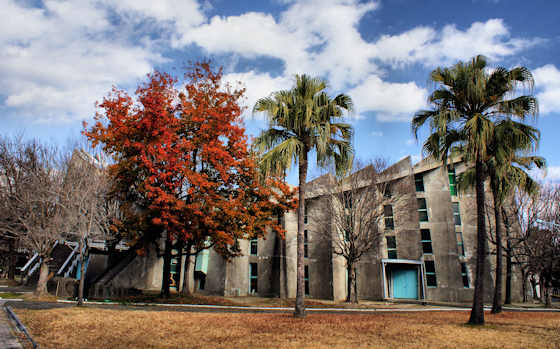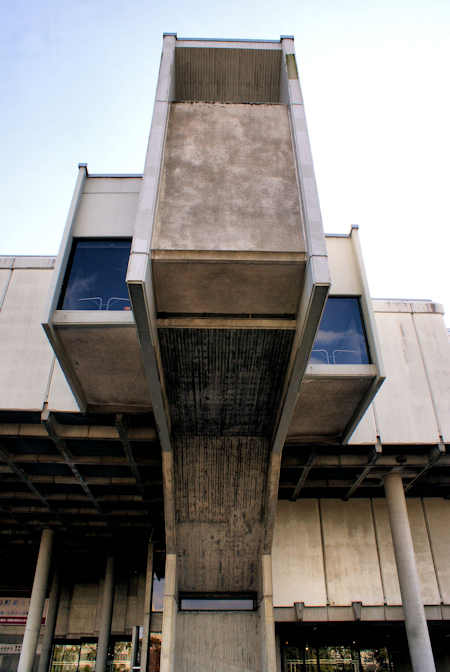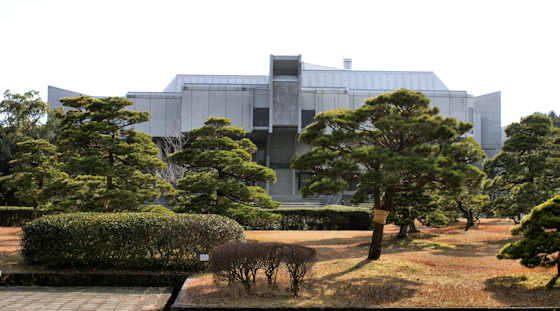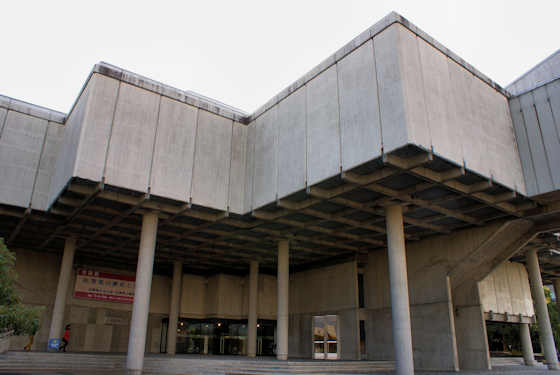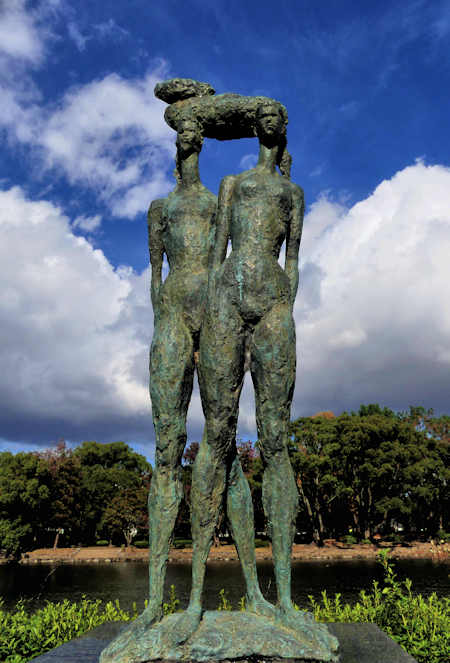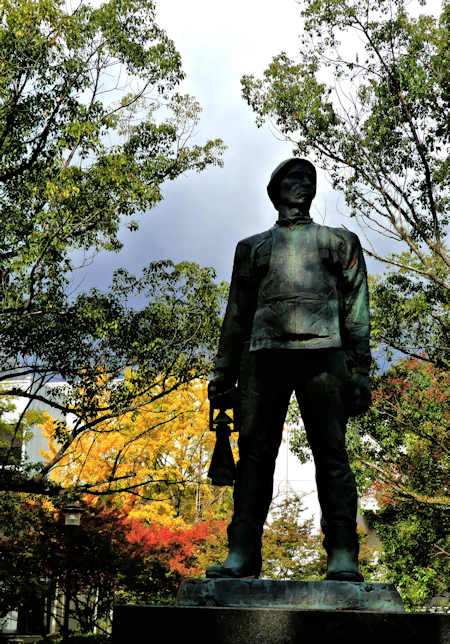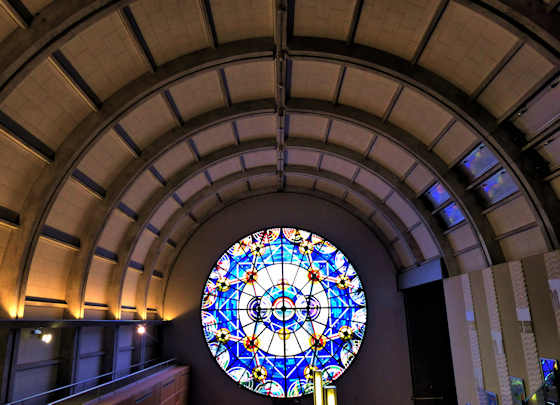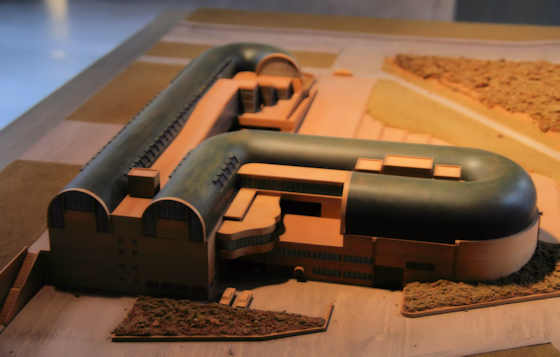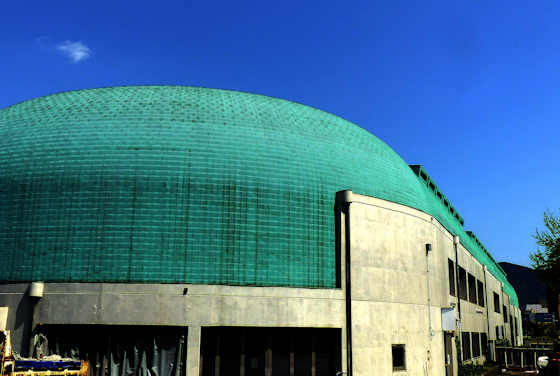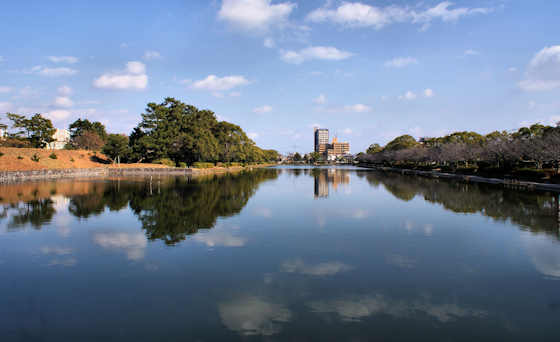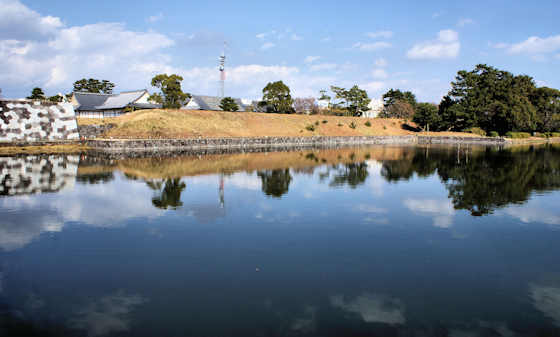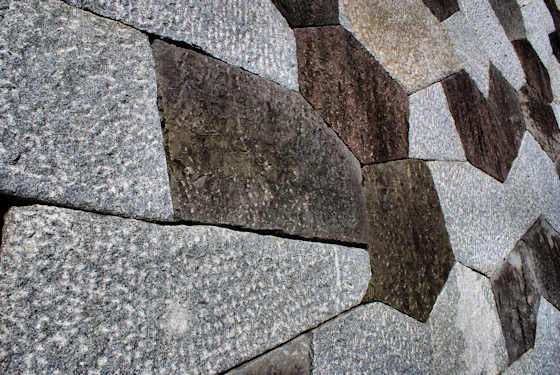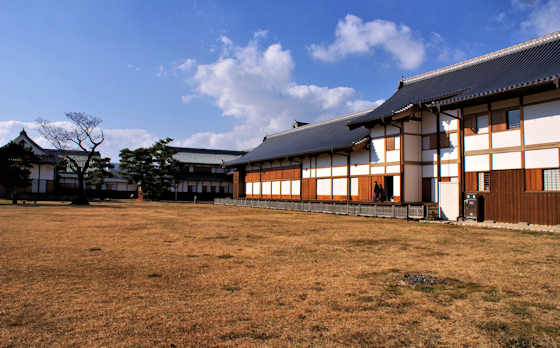Ichimura Memorial Gymnasium
At the northern end of what was the grounds of Saga Castle is yet another Modernist public building, the Ichimura Memorial Gymnasium.
It was built in 1963 and designed by Junzo Sakakura (1901-1969).
After graduating he joined the studio of Le Corbusier in Paris where he eventually came to head the studio. He assisted Le Corbusier in his only Japanese project, the National Museum of Western Art in Tokyo.
Not visible from the ground is the rather elegant roof of the gymnasium, a saddle shape formed by two parabolic curves.
What is clearly visible is the aging concrete surface, something that so many concrete structures in Japan suffer from and that will only get worse as time marches on.

